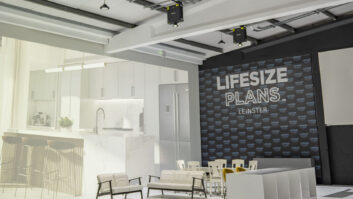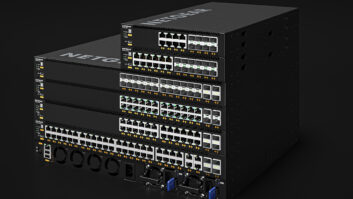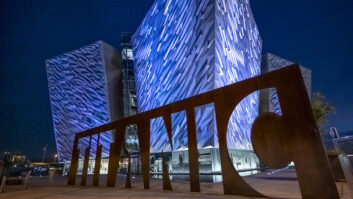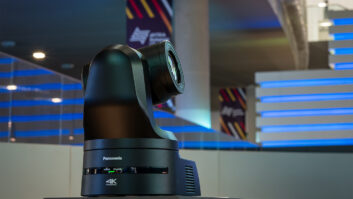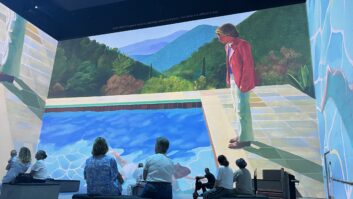
In February you opened a new customer experience centre, which is something a number of companies have done over the past couple of years. Is this a response to demand from customers or is it more manufacturer led?
We first opened a customer centre in Bracknell in 2013, so we know that there is demand from both our channel and end users. The challenge with showcases such as this is how to reflect the sheer breadth of the Panasonic product offering and our growing business solution division.
Our products range from document scanners to high-end cinematography cameras, and we’ve created custom-built technology that powers railway communications in rural areas by combining energy generation and battery storage. So, no two sales conversations are the same. Instead of trying to show all of this off, we’ve tried to achieve a space that offers a ‘blank canvas’ for innovation, it’s designed to spark conversations around how Panasonic can solve business technology challenges.
And what are some of the most common challenges you see?
Our strategy is to provide solutions for the media and entertainment industry by partnering with some of the best in the business. These third-party solutions complement our current portfolio and help create solutions that have a value that’s far greater than our products alone.
One example is live events, where our customers are keen to use our technology to keep audiences inside the venue entertained while appealing to a far wider audience by live streaming concerts, conferences and esports live.
An example is at Gothenburg Symphony, which is using Panasonic remote camera systems alongside a third-party product called the Polecam Autopod, a remotely operated and programmable telescopic elevation unit. The set up allows the Symphony to create high-end live streams of its concerts while not interfering with or distracting the artists, players or audience while the sequences are being shot. The combination of products adds a totally new dimension that wasn’t possible before.
“It’s our opinion that digitisation of physical retail is essential here and can help increase engagement with customers”
For a company the size of Panasonic, how do you remain flexible and versatile to fast developing trends in different markets?
This is always a difficult path to tread. Panasonic has many advantages in terms of its size and commitment to innovation, which sees the company invest heavily in R+D, equivalent to nearly six percent of turnover last year.
But it’s fair to say, like many large organisations, moving quickly is not always easy. Our product managers have a direct line to our manufacturing facilities, but must compete with product managers from across the globe to be heard.
Nevertheless, the company has introduced some co-creation labs in Japan, where major companies and entrepreneurial ventures can come together to develop technology together. A similar idea was introduced in Silicon Valley, where Panasonic has a new cross-organisational development centre which helps promote design thinking.
We want to encourage the same kind of co-creation thinking at the experience centre in Bracknell.
With non-traditional AV sectors such as healthcare and cinema enjoying above average growth rates, what are the emerging sectors Panasonic is currently looking to?
We are seeing a lot of demand for improved customer experience across a number of sectors. End users across industries recognise the value this can bring in terms of customer attraction and retention.
We’ve seen this, for instance, at Bergen Airport which is using seven projectors to deliver a total of 217,000 lumens and 14 million pixels of resolution, to create a 53.5 metre-long image in its departure hall. Remarkably, it features no commercial content, only beautiful images of the surrounding countryside.
In hospitality too, we’ve seen growth in projected video animations on table tops and walls that add a level of theatre to the venue.
“We know how important it is to be recognised for our innovation”
With the growing influence of the IT department, how has this changed the relationship Panasonic has with its integrators?
It’s not something that has impacted us yet. However, there is an increasing demand for monitoring and control software to manage AV equipment on a remote basis. This is an area that Panasonic is actively supporting with its CARES remote monitoring package. This will increasingly bring us into contact with IT teams, but we are familiar with their language through our existing relationships in our TOUGHBOOK and surveillance teams.
For the company’s 100th anniversary celebrations last year, various spokespeople revealed details about Panasonic’s roadmap going forward with points about continuing to innovate and also prioritising experiences. Has this translated to a change in approach? And what developments have come as a result?
The next 100 years look set to be a very different for Panasonic to the last. We are now much more open to collaboration.
On a corporate level this is manifesting itself in terms of the acquisition of a number of start up companies and the funding of many more.
Locally, we have put a lot of effort in to creating third-party collaborations. An example is in studio camera systems, where we have added rail, robotic and camera head systems to our offering by searching out synergetic relationships.
Sometimes these relationships involve our cameras being integrated in to other people’s solutions, such as the Quicklink studio-in-a-Box that was launched late last year. It’s a bi-directional calling solution that provides a resource that can be used in various locations.
During my visit to Milan (for the 100th anniversary), revitalising the high street was also mentioned as a goal for the company. As retailers continue to struggle in this area, how will Panasonic help to reverse this trend?
Panasonic established a business solutions team dedicated to creating technology solutions for retail and logistics in 2017. The focus for the team has been around providing Panasonic products, often in conjunction with third-party products and software that can add value to end users.
In retail, for instance, the proposition is around addressing customer experience in retail stores and helping bricks and mortar retailers address the growing challenges on the high street. It’s our opinion that digitisation of physical retail is essential here and can help increase engagement with customers.
Retailers are often keen to gain insight on their customers and find ways to operate more efficiently. Staffing levels in retail have shrunk, understaffing stores usually results in underperforming stores, unless you are able to achieve efficiency in certain processes. One example is dynamic pricing, Panasonic is working with a number of European supermarkets to introduce digital price tags, often combined with CCTV analytics to monitor stock levels, which allow instantaneous price changes across stores. It’s the kind of efficiency measure that can put people back on the shop floor dealing with customers.
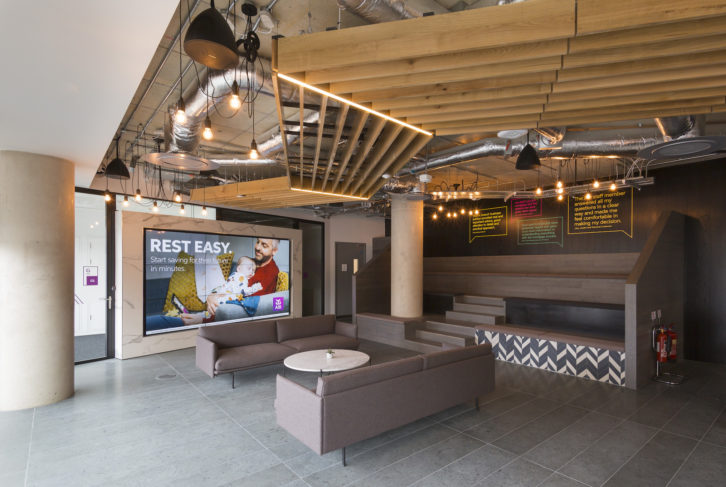
We named Panasonic as a finalist in our AV Technology Awards for its work with the McKeon Group on the Allied Irish Bank project as well as for the PT-RZ120 laser projector. What does it mean for a company as established as Panasonic to receive this sort of recognition?
Despite being an established company, we are aware that we operate in a very competitive landscape. One hundred years of heritage doesn’t guarantee you success, so we still get a huge sense of pride and excitement when we are recognised for our work.
Additionally, we are aware that there is a perception that heritage doesn’t always mean innovation, so we know how important it is to be recognised for our innovation. We are very much hoping that the judges agree that these submissions hit that mark.

